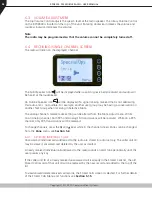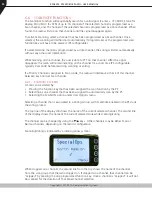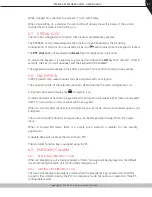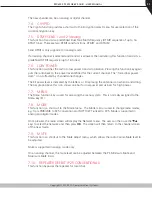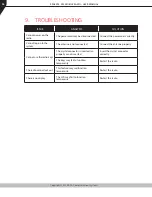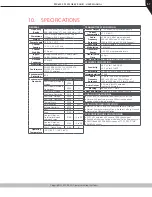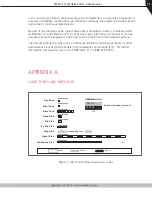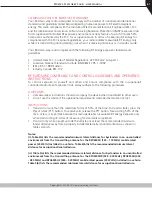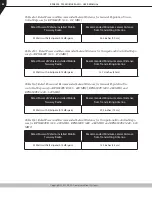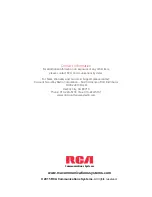
Copyright © 2015 RCA Communications Systems
RPX6500 P25 MOBILE RADIO - USER MANUAL
61
COMPLIANCE WITH RF EXPOSURE STANDARDS
Your RCA two-way radio is designed to comply with a number of national and international
standards and guidelines (listed below) regarding human exposure to RF electromagnetic
energy. This radio complies with the Institute of Electrical and Electronic Engineers (IEEE), FCC
and the International Commission on Non-Ionising Radiation Protection (ICNIRP) exposure limits
for Occupational/Controlled RF exposure environment at duty factors of up to 50% talk 50%
listen and is authorized by the FCC for occupational use. In terms of measuring RF energy for
compliance with the FCC exposure guidelines, your radio radiates measurable RF energy only
while it is transmitting (during talking), not when it is receiving (listening) or in standby mode.
Your RCA two-way radio complies with the following RF energy exposure standards and
guidelines:
• United States FCC, Code of Federal Regulations; 47CFR Part 2 Sub-part J
• American National Standards Institute (ANSI)/IEEE C95. 1-1992
• IEEE C95.1-1999 Edition
• Industry Canada RSS-102
RF EXPOSURE COMPLIANCE AND CONTROL GUIDELINES AND OPERATING
INSTRUCTIONS
To control exposure to yourself and others and ensure compliance with the occupational/
controlled environment exposure limits, always adhere to the following procedures.
GUIDELINES:
• User awareness instructions should accompany the device when transferred to other users
• Do not use this device if the operational requirements described herein are not met
INSTRUCTIONS:
• Transmit no more than the rated duty factor of 50% of the time. To transmit (talk), press the
Press-To-Talk (PTT) button. To receive calls, release the PTT button. Transmitting 50% of the
time, or less, is important because this radio generates measurable RF energy exposure only
when transmitting (in terms of measuring for standards compliance).
• Transmit only when people outside the vehicle are at least the recommended minimum
lateral distance away from a properly installed externally-mounted antenna, as shown in
Tables 4 and 5.
Notes:
(i). Table 4(a) lists the recommended minimum lateral distance for bystanders in an uncontrolled
environment from the transmitting antenna for the RPX6500V (135 – 174 MHz) mobile rated
power (25 Watts) installed in a vehicle. Table 4(b) lists the recommended minimum lateral
distance for occupational/controlled use.
(ii). Table 5(a) lists the recommended minimum lateral distance for bystanders in an uncontrolled
environment from the transmitting antenna for the RPX6500UR (335 - 400 MHz), RPX6500U (400
- 480 MHz) and RPX6500U2 (440 – 520 MHz) mobile rated power (25 Watts) installed in a vehicle.
Table 5(b) lists the recommended minimum lateral distance for occupational/controlled use.


